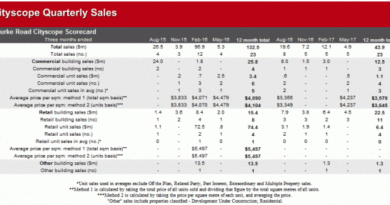Adjusting Your Finance For Positive Cash Flow – Part 4 of 5
This is Part 4 of the 5 part guide on adjusting your finances to achieve positive cash flow. Read Part 1, How to find positive cash flow properties here and Part 2, Commercial Properties here and part 3 Renovate for Positive Cash Flow here.
Having trouble creating positive cash flow? Mortgage payments too high? Maybe it’s time you thought outside the square and changed your finance plan. In this day and age, several options are available to investors which will make it a lot easier to create and maintain a positive cash-flow portfolio. Here are some question and answers from our experts.
Q: Do you think positive cash-flow properties are harder to find now compared to five or six years ago?
A: It’s a lot harder to find positive cash-flow properties now mainly due to the fact that most properties have gone up in value – even in country areas – so the yield has dropped, while at the same time the interest rate has gone up. Today it’s harder to get positive cash flow from properties alone, unless you leverage lower or use a cash-flow mortgage.
Traditionally it has always been difficult to find positive cash-flow mortgages. For example, most property investors choose to leverage around 80% or more, the interest rates are above 7% and the rental yield is around 4%.
Q: Do you think capital growth is a critical factor in buying a positive cash-flow property?
A: Before June 2006, positive cash-flow residential property in Australia had only one meaning, which was the rent had to be higher than interest repayment. You can find these types of properties mainly in regional areas. The predominant focus for cash-flow property investors is cash flow, not so much capital growth.
It’s very rare that you can find positive cash-flow properties with consistent high capital growth over the long term. This is no different to most other investment assets.
However, there are some cash-flow properties that may have very high yield, where investors chasing high yield can create demand for them and hence push the price up (capital gain), but once the yield drops (relative to price rise), the reason investors buy them in the first place has disappeared, then their prices tend to stagnate for years.
After the introduction of Cash Flow Mortgage in June 2006, cash-flow property has had a new meaning; that is, high-growth properties can also have positive cash flow. For these types of ‘cash-flow property investors’, capital growth is a critical factor, because for a long-term ‘buy and hold’ investor, capital growth without paying capital gains tax until you sell and enjoying negative gearing benefits can make you a lot more money than getting a double hit from traditional cash-flow properties.
Q: Are you an advocate of the ‘buy and hold’ strategy?
A: ‘Buy and hold’ is a term widely used by investors, and it has been considered one of the best investment strategies.
‘Buy and hold’ generally means that you buy a good asset (eg shares or property), hold it for the long term and hopefully never sell, because generally good assets always go up in value over time.
But most property investors have interpreted ‘buy and hold’ as ‘buy and hold properties’. This isn’t quite correct.
Property investors can make similar money to other types of investors if they only buy and hold properties (without mortgages). They will make a lot more money if they buy and hold mortgages paying interest-only and never the principal.
So for property investors, ‘buy and hold properties’ isn’t an effective strategy, but ‘buy and hold mortgages’ is.
Q: What should an investor look for when purchasing a positive cash-flow property?
A:
- Land content should be greater than 40% of the whole property price; above 70% would be ideal.
- Property should be bought at or around local median price for the same type of property and shouldn’t go over 50% of the median price (eg house compared to house median price, apartment compared to apartment median price. If the house median price is $400,000, you shouldn’t be buying greater than $600,000).
- The area should have increased in value by three to four times in the last 14 years. The more specific the better; if you can find out more about the performance for the last 14 years for the exact property and street, that’s ideal.
- Lenders will lend 80% no-doc without problems. This usually depends on it being a suitable property for the area and not specialised properties, solid growth, good size, zoning, good postcode, good population size and easy comparable sales for valuation.
Q: What’s the best piece of advice you can give to an investor who’s just starting out?
A: Get educated first.
Homeowners buy a home to live in because they like the property. Investors buy investment property to create wealth; hence you need to know the basics of financing strategies, tax, asset protection and property selection. Or you should at least know who the right people are to provide you assistance if you’re too busy to learn about it.
This article has been republished with permission from Your Investment Property magazine. Try our Loan Repayment Calculator and find the best repayment strategy for you.
Image sourced from http://www.SeniorLiving.org


